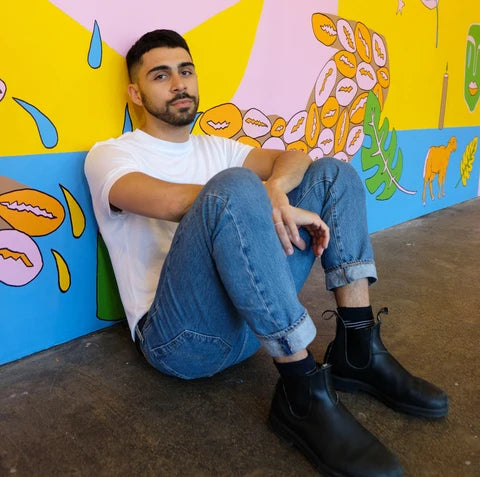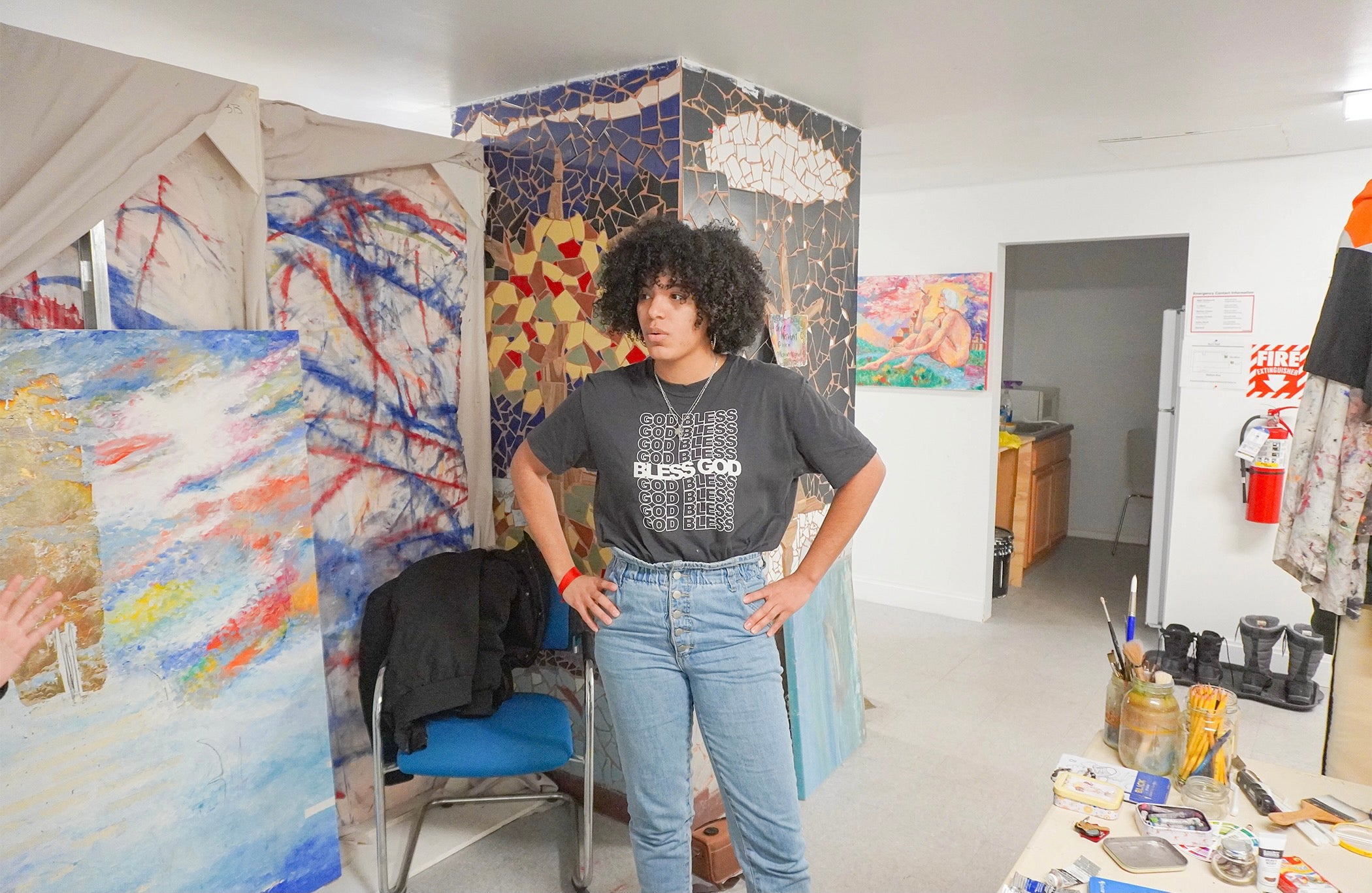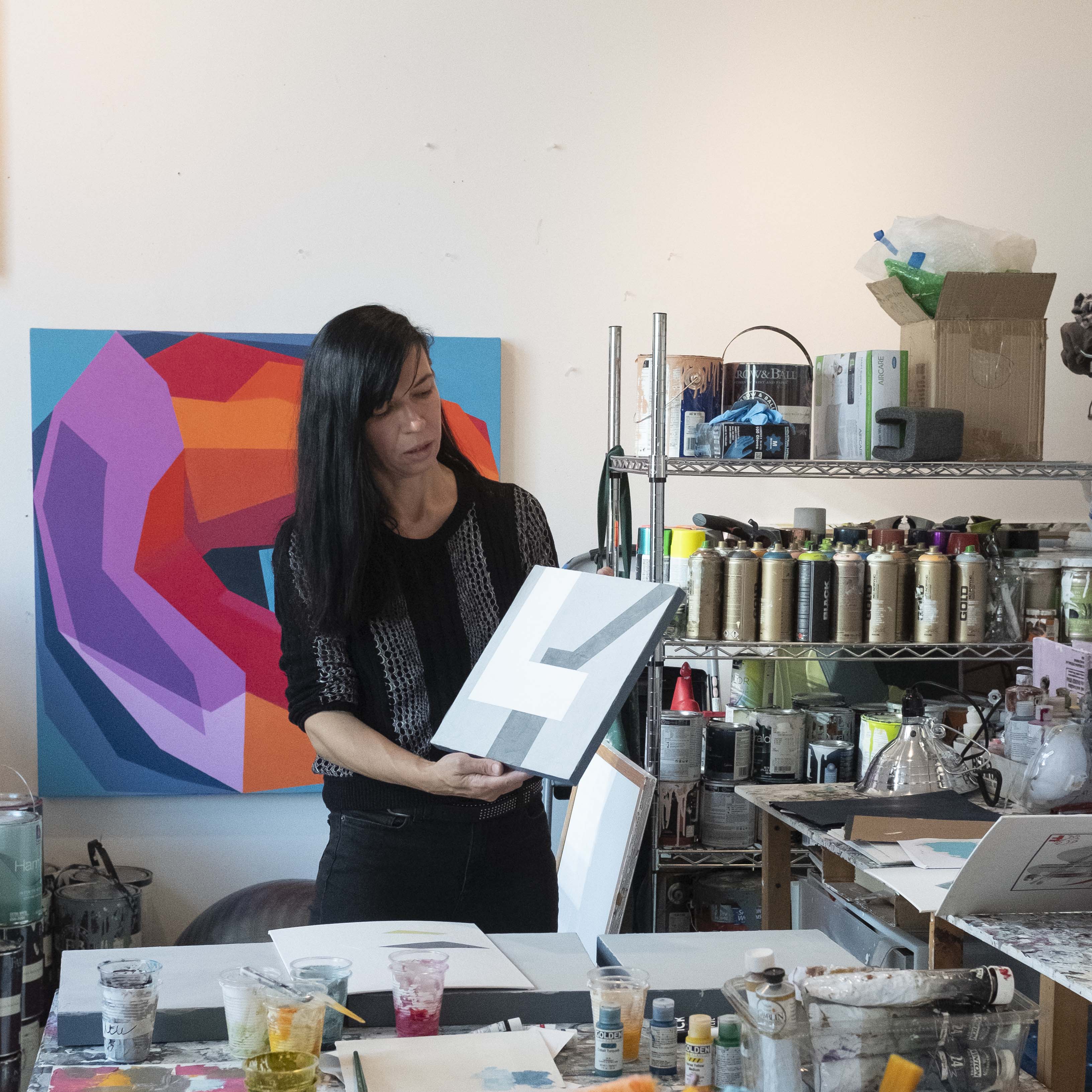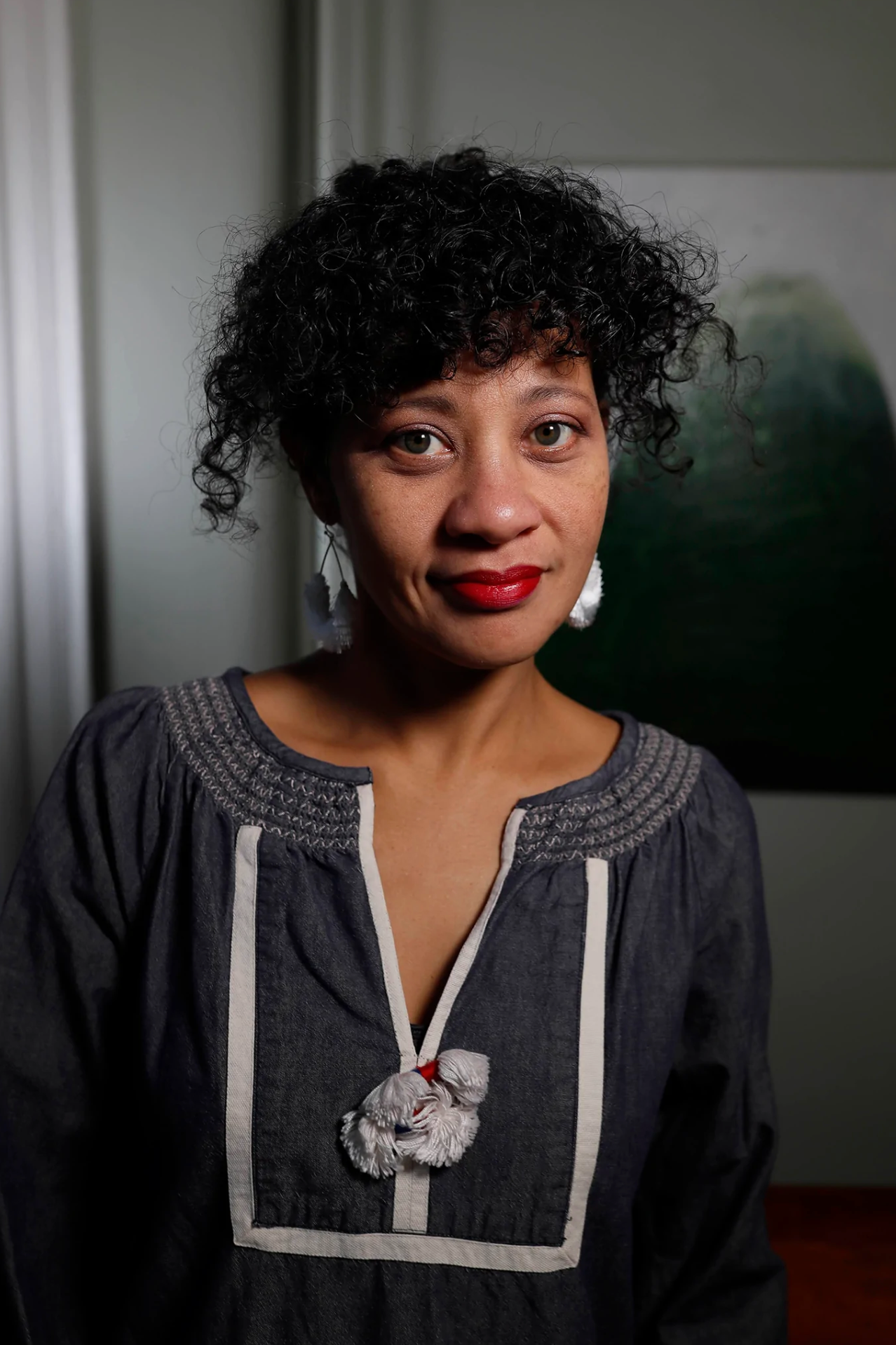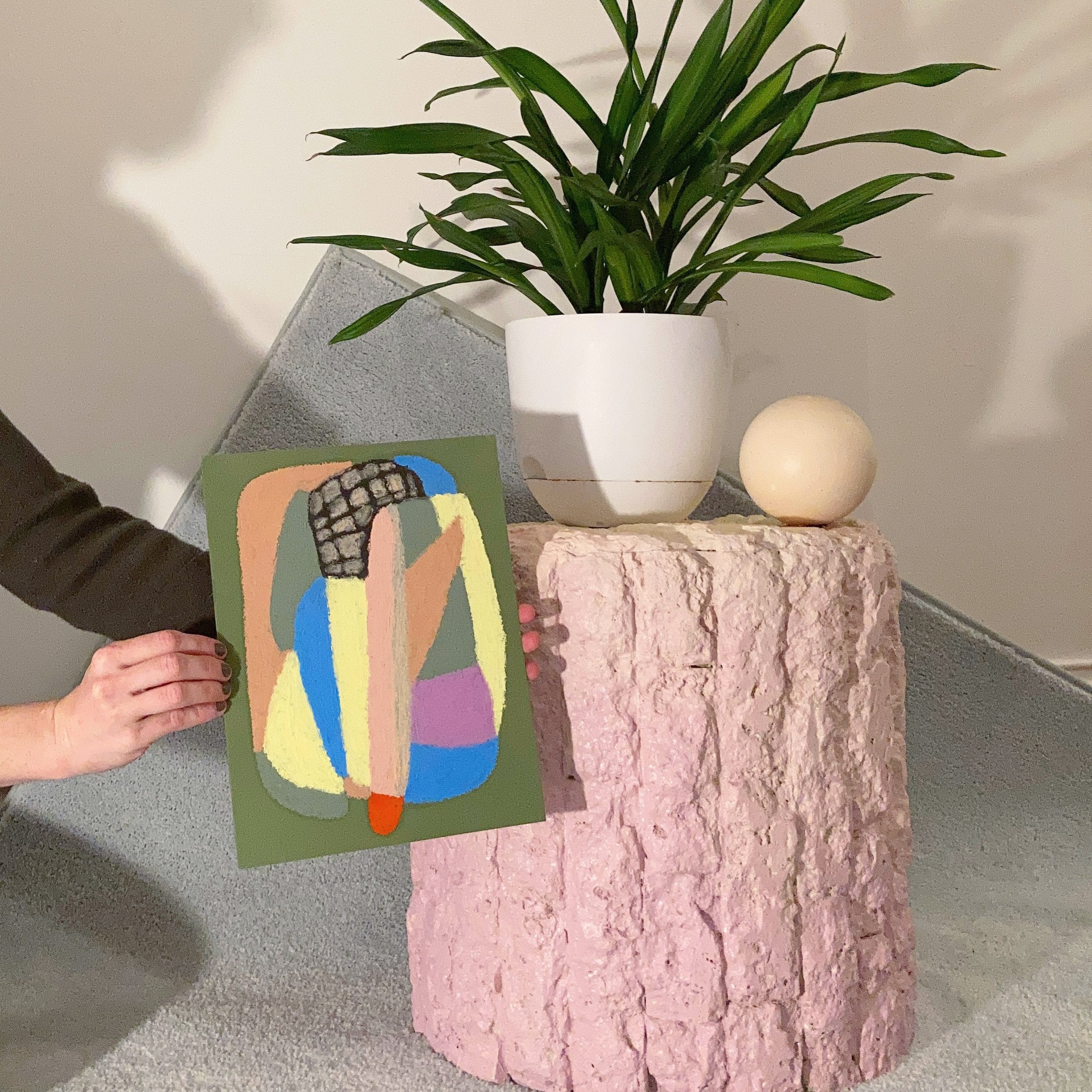No Products in the Cart
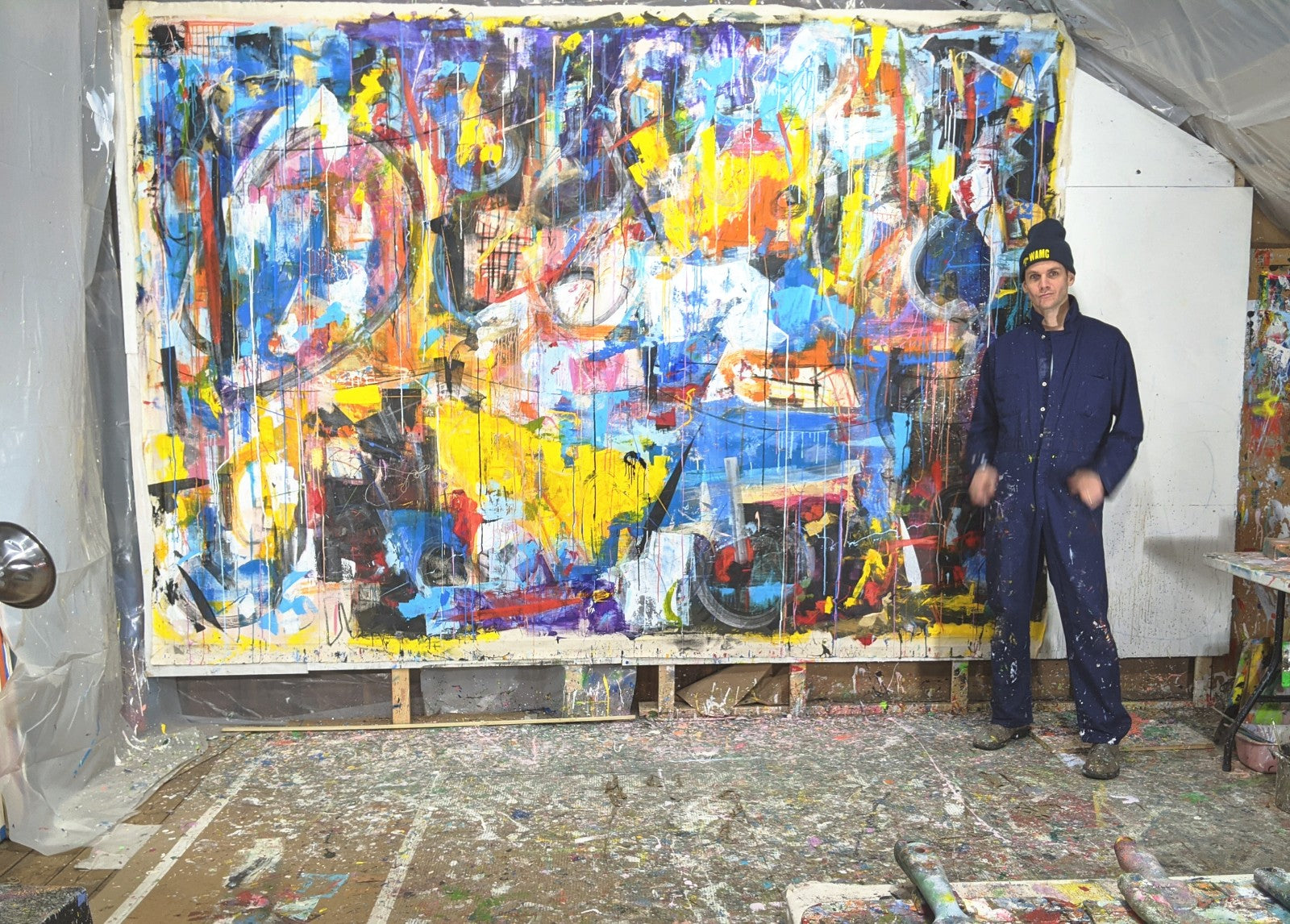
MEET JOSEPH

There's nothing more validating when an artist surprises us with his enthusiasm. This was Joseph Conrad-Ferm for us during our COVID-19 Donation Project.
Now listening to him talk about working as as a critical care nurse - an epiphany and call of fate as much as his career as an artist - it starts to make sense how Joseph is undefeated by things happening in the wide wide world. After all, what is painting but willing your own little world (well, in Joseph's case, sometimes sprawling canvases) into existence?
Q. Could you briefly introduce yourself and where you are based?
My name is Joseph Conrad-Ferm.
I’m in my studio in Saugerties, New York. Thank you for bringing me on board.
Q. What are you reading/watching/listening to right now?
I’m a big fan of the idea that thoughts are things.
READING: Author Ernest Holmes, a student of Emerson’s, is a big one; Charles Haanel; Napoleon Hill.
LISTENING: I find myself listening to R&B lately. I don’t know where it came from. But Spotify is great, I can find the right channels on there.

Q. You have a really interesting “origin story” as a painter.
I’ve been painting since January of 2002. I was 26 years old - I wasn’t very productive before that, and I made some wise, much needed choices including starting to paint. I had tried before, but I wasn’t able to since I left high school, and it physically pained me. I had this inside me and I didn’t know what to do with it. I can’t tell you how many times I picked up a brush, pencil, or marker but couldn’t put it to canvas or paper with any kind of intent or direction.
At 26, something changed and I haven’t been able to stop for 18 years now. There are public and private collections all over the world now. I’m happy people saw something resonating in my works enough to take it into homes and offices.
I don’t know if I can detach art from my other life. I work full-time as a critical care nurse.
Back in 2004, I met my then-girlfriend - she’s now my wife and an incredible artist - said “Joseph, do you think you can make a living as an artist right now?” I took an honest look and decided no, because I had just started working with galleries and selling artwork. That prompted me to take a deeper look at what I might be able to do career-wise.
So I petitioned the universe of what I would be good at, and being a nurse came to mind. And 15 minutes after I came to my wife’s driveway, the first words out of her mouth were: “Have you thought of being a nurse?” And a light went off in my head. I put everything I had in the next three years into becoming a registered nurse all the while painting and exhibiting.
At the time, I thought I would be a nurse to support my painting habit. And that if the fates allow if I am able to make a living as an artist, I would stop nursing. Fast forward I have been a nurse for thirteen years now. That part of my life is so enmeshed with what happens in the studio I don’t know what I would be outside this fantastic service position. I get to be a unique help to folks. I’m able to come into the studio and translate what’s happening. Any artist, I think, is processing their life into a medium, but this is what makes me feel complete.

Q. Is the media portrayal on COVID-19 more or less correct? I read a lot of articles about healthcare workers, but would like to hear how your personal experiences were in the past two months.
Working at the ICU since April has so affected me. It’s really hard to convey - devastating is one way to describe it. But I came into the studio and what I am not able to say to you in words I was able to let go of and put it onto canvas in a way that makes sense.
My works are purely abstract. They are purely subjective experiences. What I get from is not what you’re going to get from it necessarily.
What I’m doing in the hospital with patients is absolutely an objective experience. There is nothing subjective about not being able to ventilate somebody because their lungs are filled with fluid. To be in an isolation room with these people where their families can’t visit and you’re the only person coming into contact with them during their hospital stay - you can’t explain how that is to somebody. I’m an hour and fourty-five minutes away from Manhattan, so we’re busy but still we are a community hospital. There are 500-1000-bed hospitals that are dealing with tenfold of what we face.
And when you approached me with an opportunity to try and do something. I thought that the work-on-paper donation with Curina, that cuts deep. It’s so important to have people like yourselves advocating and recognizing that this is real. We need help. So thank you for that.

Q. It feels like a luxury to talk art during these times, but art also has great potential for action. What are your thoughts on the connection between art and community action?
I might also be able to argue that art is essential!
To give somebody pause, out of their day, out of that moment - to be stopped in my tracks by a line or splash of color. Now I’ve been sucked into this artwork...
What we’re doing I think is really important. And for your platform to make that more accessible is, now more than ever, appreciated on a number of levels.

Q. You speak of channeling the moment and intuition for painting, rather than formal techniques. Do you have rituals or tips to build towards that momentum - especially during stressful times when creating art feels more strained?
When I jump into a body of work, I’m usually working on several things at once, I put on some music to fit the mood. And I sweep. I clean out the studio. I’m making way for whatever will come next. Cleaning the floor, making sure the brushes are clean.

Q. I see your paintings as a multisensory experience. What is your relationship with canvas paint in the process of painting?
Leading up to 2013, I only used brushes.
That changed when I went down to Art Basel and participated in the Fountain Art Fair in 2010. There was an art advisory I started to work with, and he helped me place three very big paintings in a boutique hotel. After about a year, I asked to have those paintings come home. But it took another two years to get them back, with the threat of litigation it was such an unpleasant experience for me that when I got them home I couldn't look at them anymore. So I put up a big piece and painted over the entire thing. Then I started scraping to bring something new to the table.
Q. I feel that in that sense, scraping, like accumulating, involves time. Almost archaeological.
Archaeological is a good way to put it. I knew I had to go through that experience in order to move forward as an artist. Scraping and revealing bits and pieces of what I was dealing with throughout.
With larger works, they become so physically intense at times. It’s a workout. I do break a sweat. And I cut myself more times than I’d like to admit. There is a sense of relief in being able to get through a handful of layers or scrape away just the top piece without damaging what’s below it.

Q. That chair your son decorated reminds me - some of your paintings have texts and comic style figures. Did your son’s drawing have anything to do with them?
I don’t have an art background. I didn’t go to college to study art, though I took art classes in high school.
When I had been painting for a year and a half, I wasn’t keen on showing my works to anybody because I didn’t think they were good enough. I had been processing negative experiences growing up, so they were deep and personal works. Then, while I was housesitting, I watched Julien Schnabel’s movie about Basquiat. I just started crying. I hadn’t cried like that since - I don’t know when. It was so deep and hit me on so many levels I didn’t even know were there.
What I saw from Basquiat gave me permission to do whatever the hell I wanted to do. If you look at what I’ve been doing from late 2003-2006, you can certainly find similarities in that there are figures in there, some of them grotesque, and text. It was the first time another artist had such a tremendous impact on me. I had to be granted that permission to be able to go do what I’m doing now.

Joseph wearing his Artist series cycling kit from Pactimo ltd.
Q. You’ve also done apparel collaboration with Pactimo. What was that like?
I’m a cyclist. I fancied seeing my work on one of the jerseys at a grand tour event would be nice.
I approached Pactimo in Colorado. They took a few paintings and designed the kits. It was a great relationship. For me it was a success to be able to see the transition.
Since then, I've been working with Kapow leggings in Australia. My younger brother is the one who put me in touch with these guys, actually. I see images of guys in Berlin, Australia, New Zealand, hiking, jogging, playing golf with my work on. Unlike a painting on a wall, it’s moving, living.
All photo credit: artist Joseph Conrad Ferm



